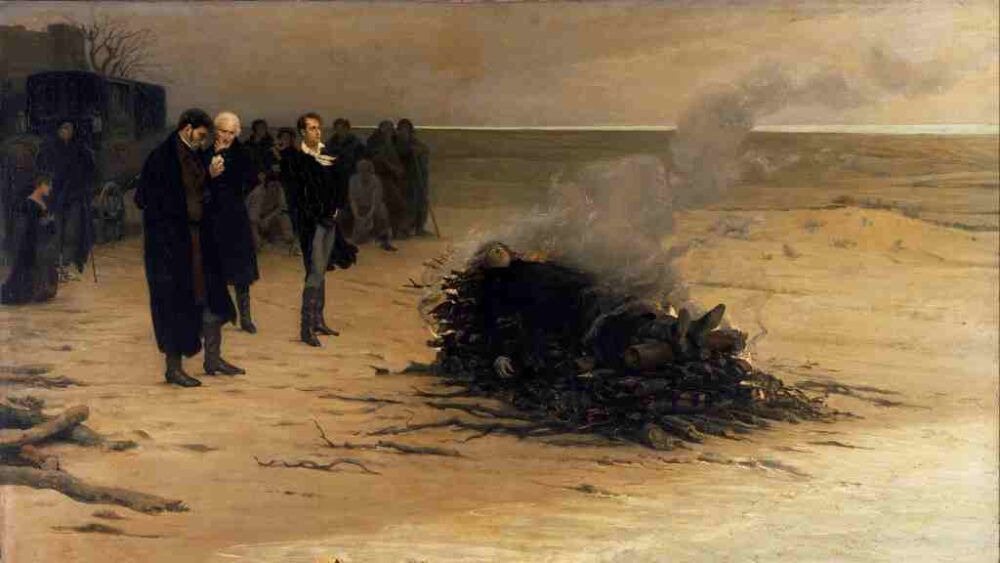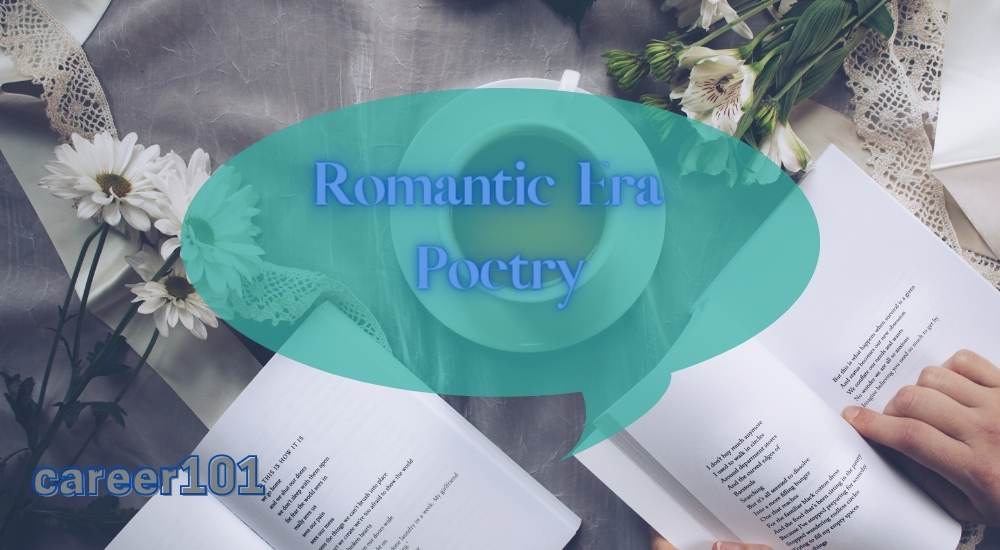Updated August 18, 2023
Romantic Poetry evolved as a movement against Neo-Classical Age Poetry. Hence, the features of Romantic Poetry are very much distinct. The Poets such as William Wordsworth, P. B. Shelley, Samuel Taylor Coleridge, John Keats, Lord Byron, and others introduced a kind of poetry that differed in Style, Subject, and Sensibilities from that of John Dryden and Alexandar Pope.
Literary legends also term Romantic Poetry “the Return to Nature,” which lasted around 1800-1850. The Romantic poets stressed imagination, passion, emotion, nature, and the lives of common people, which became the features of Romantic poetry. At the same time, Neo-classical poets stressed reason and diction, contrasted with Romantic poets.
The romantic poetry of this age also emphasized humanitarianism, fraternity, equality, liberty, and freedom of the individual. Seeking relief from the uneasy restlessness of the 18th century into the life of the Middle Ages is another important feature of romantic poetry. Many of these features transitioned into later-era Victorian Poetry.
The Features of the Romantic Poetry
Literary analysts point out certain attributes and identify them as features of Romantic poetry. Broadly, the poetry of the romantic age was a free writing style, and it was not governed by set rules, unlike neoclassical age poetry. Breaking off the set poetic lines of neoclassical and diving into infinite space was the norm for Romantic poetry. Majorly, you would see the following characteristics of poetry in the Romanticism era:

1. Reaction against the Neo-Classicism
The beginning of Romantic poetry was the movement against Neo-classical poetry. A strong reaction and protest against the bondage of set standards and customs marked it. Neo-Classical poetry was the product of intellect and reason, while Romantic poetry was more the product of emotion. So, Romantic poetry contrasts clearly with neo-classical poetry.
2. Emotions were key to Romantic Poetry
Romantic poetry abounds in emotion. Romantic poets stressed expressing subjective emotions, and it is usually the poets’ personal experience and introspection that takes the form of poem. For instance, Wordsworth’s description of a lonely, beautiful girl singing a folk song while reaping in the fields becomes his famous poem ‘The Solitary Reaper”.
Similarly, “Daffodils” is a poem by Wordsworth that describes the beauty of a stretch of beautiful flowers that the poet is reminded of while sitting in his room many days after he had visited this scenery. Romantic poets chose to express emotions of a wide variety through their poems, which was completely absent during Neo-Classical Poetry.
3. Melancholic Tone
It is one of the essential elements of Romantic poetry. Romantic poets often put it in their poems. Even it is an important source of inspiration for the Romantic poets. In ‘”Ode to a Nightingale, Keats wrote:
……………………………………………for many a time
I have been half in love with easeful Death,
Call’d him soft names in many a mused rhyme,
To take into the air my quiet breath;
Now more than ever seems it rich to die,
To cease upon the midnight with no pain.
4. Imagination Was Prominent in Romantic Poetry
Apart from emotions, the Poets of Romanticism also indulged in plenty of imagination and mysticism in their poems. Coleridge is highly regarded for his intense imaginative powers. The poet called it “willing suspension of disbelief’ which led him to create poems about the weird, the supernatural, and the obscure.
Works of Samuel Coleridge, such as ‘The Rime of Ancient Mariners’ and Kubla Khan,’ showcase the poet’s brilliance in recreating a world of imagination with compelling characters and unbelievable settings. In the words of John Keats: “What the imagination seizes as beauty must be the truth.”
The Romantic poets used “a certain coloring of imagination” to present ordinary subjects as unusual, mystical, and sometimes supernatural.
5. Nature was Central to Romantic Poetry
Another important feature of Romantic poetry is Nature. The Romantic poets shifted away from the concrete and crammed city lanes to meadows, seas, mountains, and valleys. The poets pick up different aspects of Nature and put them in a new form every time. But Nature remains the spirit of all Romantic Poetry. Wordsworth is popularly known as “a poet of nature.”
Wordsworth’s poems represent a spiritual bonding with Mother Nature, a gentle, nurturing force for all humankind. Keats sees beauty in Nature, and his many ‘Odes’ reflect his poetic sensibilities. The world of Nature in Shelley’s poetry is wilder and sometimes crueler. The romantic poets took to Nature for inspiration, instruction, and imagination.
6. Supernaturalism
You can very easily trace the Supernatural element in most of the poems of the Romantic era. For instance, Samuel Taylor Coleridge is the leading romantic poet, and “kubla khan” by him is full of supernatural elements.
7. Common Diction (Easily Comprehensible)
Romantic poetry is also distinguished by its diction. The poets wrote, “in a selection of language used by men.” Written mostly in a melancholic tone, Romantic Poetry is marked by “simplicity of diction.” The poets made generous use of personification, imagery, and comparison, but the language was easy to understand for the common person.
The Romantic poets argued that the diction of Neo-classical poetry was beyond comprehension for the commoners and became prosaic to a great extent. Hence, The romantic poets discarded the redundant language of Dryden and Pope and began straightforward use of language and meter. But the poets ensured that the rustic language was not inferior or vulgar but rather rhythmic expressive.
Features of Romantic Poetry in Conclusion
To conclude, it was an effort to escape the pretentious intellectualism of the Augustan Era. The poets included “the primary laws of our nature” to highlight the “essential passions of the heart” by using “low and rustic life.” To the mix, they also added the liberal ideologies of the French Revolution (1789). So, Romantic Poetry brought in a new era of simplistic, mystical, and lyrical poems that provided “immediate pleasure” to the readers.
Publication of Lyrical Ballad’ by William Wordsworth in 1798 marks the beginning of the romantic poetry. The Lyrical Ballads was a collection of the new style of poetry composed by Wordsworth and Coleridge. These poems were in everyday language and took up various subjects, including birds, mariners, landscapes, and others.
In the Preface of Lyrical Ballads, Wordsworth pointed out poetry as: “Poetry is the spontaneous overflow of powerful feelings: it takes its origin from emotions recollected in tranquility.” Obviously, the observations of Wordsworth speak a whole lot of things about Romanticism.
Questions Mostly Asked on Features of Romantic Poetry
Ans: (a) Reaction against the Neo Classicism (b) Emotions (c) Melancholic Tone (d) Imagination (e) Supernaturalism (f) Nature are the main features of the Romantic poetry.
Ans: (a) Emotions (b) Melancholic Tone (c) Imagination (d) Supernaturalism (e) Nature are the five characteristics of romanticism
Ans: Romanticism was the movement of artistic, literary, musical and intellectual that originated towards the end of the 18th century, and attained its peak in 1850. The romantic poetry of this age laid special emphasis on humanitarianism, fraternity, equality, liberty and freedom of the individual. The characteristics of romanticism are- (a) Emotions (b) Melancholic Tone (c) Imagination (d) Supernaturalism (e) Nature
Ans: Nature, Imagination and Sublime are the three elements that typically found in romantic poetry.
Ans: (i) Glorification of Nature (ii) Awareness and Acceptance of Emotions (iii) Celebration of Artistic Creativity and Imagination (iv) Emphasis on Aesthetic Beauty (v) Spiritual and Supernatural Elements (vi) Vivid Sensory Descriptions are The six characteristics of Romanticism.
Ans: The main themes of the Romanticism are: (i) Revolution, democracy, and republicanism (ii) The Sublime and Transcendence (iii) The power of the imagination, genius, and the source of inspiration (iv) Nature and the Natural
Beyond Characteristics of Romantic Poetry Under Literature Posts
- The Prose of the Early 19th Century Or Romantic Prose
- The Early 19th Century Novels & Novelists [Romantic Novelists]
- Legendary John Keats as the Prolific Poet of the Romantic Age
- Wiki Bio of P B Shelley as the Acclaimed Poet of Romantic Age
- Legendary William Wordsworth as A Poet of Nature in Romantic Age
- The Anglo Indian Henry Louis Vivian Derozio as Romantic Poet
